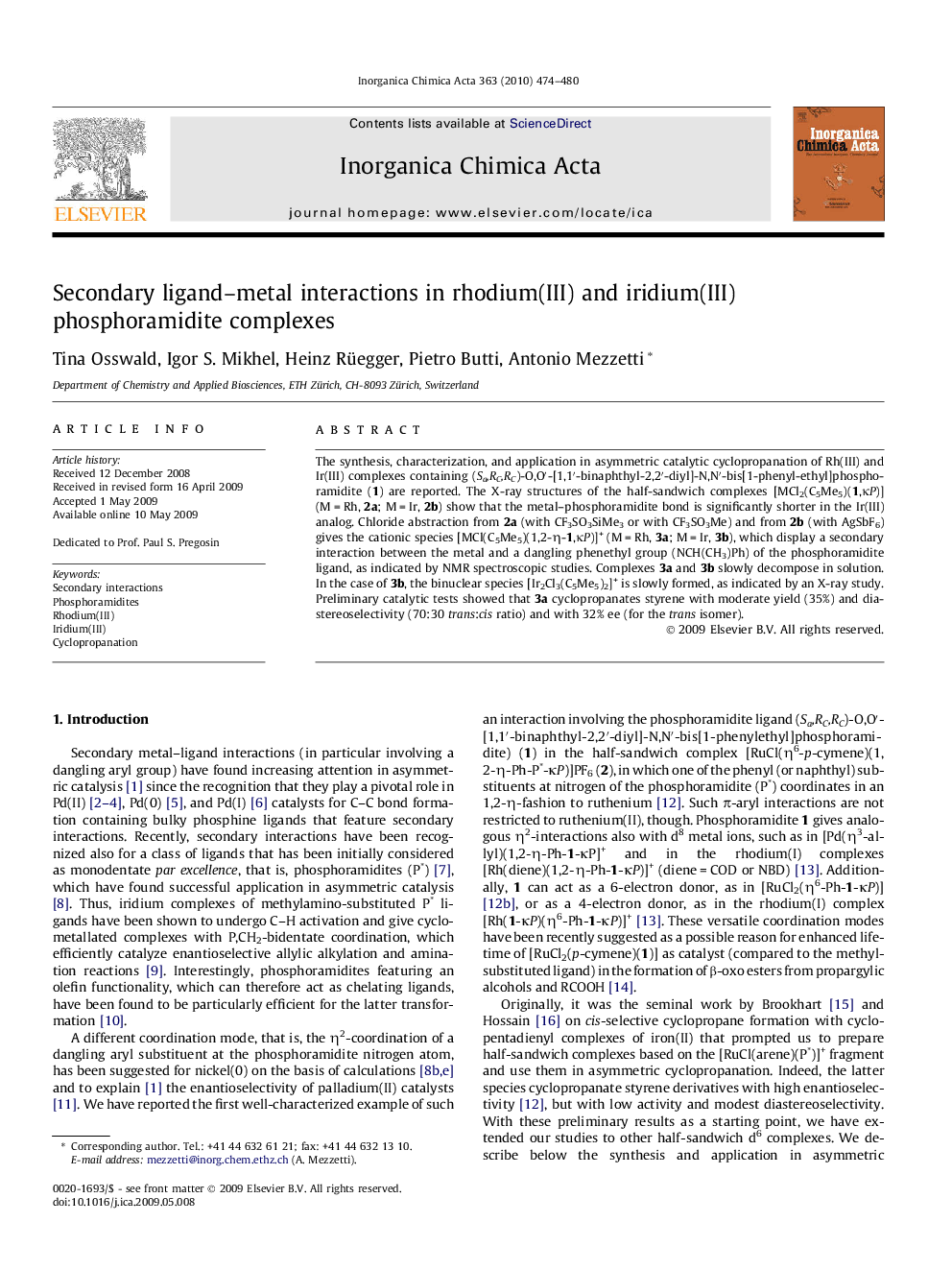| Article ID | Journal | Published Year | Pages | File Type |
|---|---|---|---|---|
| 1312640 | Inorganica Chimica Acta | 2010 | 7 Pages |
The synthesis, characterization, and application in asymmetric catalytic cyclopropanation of Rh(III) and Ir(III) complexes containing (Sa,RC,RC)-O,O′-[1,1′-binaphthyl-2,2′-diyl]-N,N′-bis[1-phenyl-ethyl]phosphoramidite (1) are reported. The X-ray structures of the half-sandwich complexes [MCl2(C5Me5)(1,κP)] (M = Rh, 2a; M = Ir, 2b) show that the metal–phosphoramidite bond is significantly shorter in the Ir(III) analog. Chloride abstraction from 2a (with CF3SO3SiMe3 or with CF3SO3Me) and from 2b (with AgSbF6) gives the cationic species [MCl(C5Me5)(1,2-η-1,κP)]+ (M = Rh, 3a; M = Ir, 3b), which display a secondary interaction between the metal and a dangling phenethyl group (NCH(CH3)Ph) of the phosphoramidite ligand, as indicated by NMR spectroscopic studies. Complexes 3a and 3b slowly decompose in solution. In the case of 3b, the binuclear species [Ir2Cl3(C5Me5)2]+ is slowly formed, as indicated by an X-ray study. Preliminary catalytic tests showed that 3a cyclopropanates styrene with moderate yield (35%) and diastereoselectivity (70:30 trans:cis ratio) and with 32% ee (for the trans isomer).
Graphical abstractThe half-sandwich Rh(III) and Ir(III) phosphoramidite complexes [MCl2(C5Me5)(1)] (1 is (Sa,RC,RC)-O,O′-[1,1′-binaphthyl-2,2′-diyl]-N,N′-bis[1-phenyl-ethyl]phosphoramidite) give, upon chloride abstraction, cationic complexes that are stabilized by a secondary interaction between the metal and a dangling phenethyl group (NCH(CH3)Ph), as indicated by NMR spectroscopy. Preliminary catalytic results in the asymmetric cyclopropanation of styrenes are reported.Figure optionsDownload full-size imageDownload as PowerPoint slide
